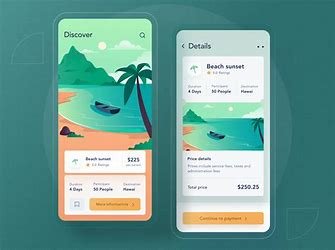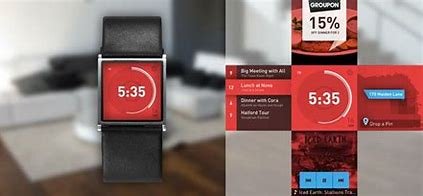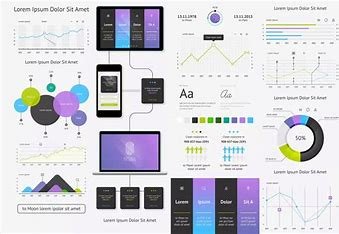Table of Contents
- Introduction
- There are a principles that guide the design of user interfaces;
- Types of User Interface Design
- Mobile App Design:
- Web Application Design:
- Wearable Device Design:
- Game UI Design focuses:
- AR/VR Design:
- Voice UI Design:
- Product Design:
- Icon Design;
- Infographic Design;
- These are the user stories associated with this feature;
- conclusion
- write FAQs on User Interface Design
Introduction
User Interface Design (UID) refers to the creation of user interfaces, for computer applications, websites or mobile devices. It encompasses the design and implementation of components that allow users to interact with and navigate through the interface effectively.
An interface that is user friendly should be intuitive easy to navigate and visually attractive. UID involves stages such as conducting user research sketching out ideas creating prototypes and evaluating the interface based on feedback, from users.
There are a principles that guide the design of user interfaces;
1. Consistency; It’s important to maintain a design language throughout the interface. This helps users easily predict and remember how to interact with elements, within the interface.
2. Simplicity; Keeping the number of options and choices to a simplifies the interface and reduces load for users.
3. Feedback; Providing feedback to users when they interact with the interface is essential. It helps keep them engaged. Gives them a sense of accomplishment.
4. Accessibility; Making sure that the interface is accessible to all users, including those with disabilities who rely on screen readers or other assistive technologies promotes inclusivity and compliance with accessibility guidelies.
5. Efficiency; Optimizing the interface for speed and efficiency is crucial. This ensures that users can navigate through it quickly and perform actions without any hassle.
As a user I desire an interface that’s easy to use and navigate enabling me to interact with the software application or website.
Types of User Interface Design
Responsive Web Design ensures that a website appears correctly on devices, including desktops, tablets and smartphones. It involves creating layouts that’re flexible using grids and incorporating images that adapt to different screen sizes.
Mobile App Design:
refers to the process of developing applications, for iOS or Android devices. This requires an approach due to the variations in platforms and screen dimensions.

Web Application Design:
Web Application Design focuses on enhancing the usability of web based applications. It takes into consideration factors like data visualization, interactivity and responsiveness to create an user experience.

Wearable Device Design:
Wearable Device Design involves designing user interfaces for devices like smartwatches and fitness trackers. The goal is to create interactions that cater to the needs of wearable technology users.

Game UI Design focuses:
Game UI Design focuses on designing user interfaces for video games. This includes elements such as menus, dialogue boxes and in game controls that enhance the gaming experience.

AR/VR Design:
AR/VR Design revolves around creating user interfaces for augmented reality (AR). Virtual reality (VR) applications and experiences. The aim is to design interfaces that seamlessly integrate content with the real world or virtual environments.

Voice UI Design:
Voice UI Design involves crafting interfaces for voice controlled assistants and devices like Amazon Echo or Google Home. The focus is on making interactions natural and intuitive through voice commands.

Product Design:
Product Design encompasses the design of products such as smartphones, wearables and household appliances. It considers aspects, like aesthetics, functionality, usability in order to create appealing yet functional products.

Icon Design;
Creating easily recognizable icons, for different applications, like web pages, apps and social media platforms is a crucial aspect of the process.

Infographic Design;
It focuses on designing visually captivating graphics that effectively convey data or information in a concise and comprehensible manner.

While each type of UI design presents its challenges and considerations the ultimate objective remains consistent; crafting interfaces that are visually appealing, functional and user friendly.
These are the user stories associated with this feature;
- As a user I seek an appealing and uncluttered interface that enhances my experience.
- As a user I value consistency in design throughout the interface making it easier for me to remember how different elements function.
- As a user I prefer a design that includes essential options and choices allowing me to quickly locate what I need.
- As a user receiving immediate feedback when interacting with the interface boosts my engagement and confidence, in taking actions.
- As a user inclusivity matters to me; therefore an accessible interface ensures that all users can participate regardless of disabilities.
- As a user having an interface that loads swiftly and efficiently provides me with smooth and fast experiences.
Lastly having the ability to personalize the interface according to my preferences is important as it grants me a more tailored experience.
By including these user narratives the development team can guarantee that the User Interface Design is not aesthetically pleasing but incredibly efficient.
conclusion
In conclusion user interface design (UID) plays a role in shaping the user experience of software applications or websites. By following practices and incorporating principles such, as consistency, simplicity, feedback, accessibility and efficiency UID professionals can create appealing and highly functional user interfaces.
write FAQs on User Interface Design
1. What does User Interface Design mean?
User Interface Design (UI Design) refes to the process of creating an interface that allows users to interact with software applications or websites. This interface includes elements such, as buttons, icons, images, text and other graphical components.
2. Why is UI Design important?
UI Design holds importance as it greatly influences the user experience. A crafted UI can enhance user engagement with software or websites boost conversion rates and contribute to success.
3. What are the key principles of UI Design?
The principles that define UI Design encompass consistency, clarity, feedback, simplicity, accessibility, responsiveness and load efficiency. By adhering to these principles designers can develop interfaces that’re visually appealing and highly functional.
4. How can you enhance your UI Design skills?
To enhance your skills in UI Design;
1. Learn the fundamentals of UI Design by studying the works of designers and analyzing their approaches.
2. Practice your design skills by working on projects or contributing to open source projects.
3. Seek feedback from peers clients or end users to identify areas, for improvement and refine your skills accordingly.
Keep yourself informed about the trends and advancements, in UI Design by participating in workshops, webinars or reading publications related to the industry.
5. Can you please explain the distinction between UI Design and User Experience Design (UXD)?
UI Design primarily concentrates on the interactive components of software applications or websites. On the hand UXD is a comprehensive field that encompasses UI Design as well as other elements such, as user research, content strategy and information.